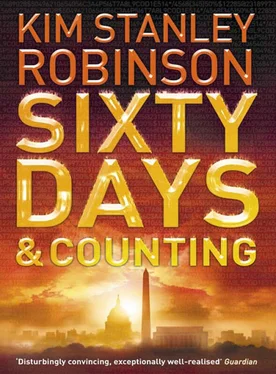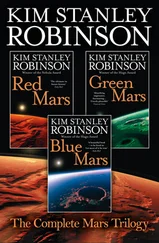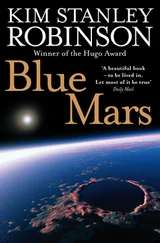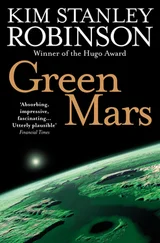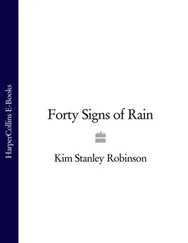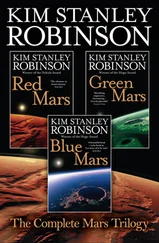This was true in so many areas. The potential was there, but time was required to realize the potential, and now it was beginning to seem like they did not have much time. Speed was crucial. This was the reason Diane and others were still contemplating nuclear.
It would be good if they needed less energy. Well, but this was an entirely different problem, dragging in many other issues – technology, consumption, lifestyles, values, habits – also the sheer number of humans on the planet. Perhaps seven billion was too many, perhaps six billion was too many. It was possible that three billion was too many. Their six billion could be a kind of oil bubble.
Edgardo was not calling, neither was Caroline calling.
Desperate for ways to occupy his mind – though of course he did not think of it that way, in order not to break the spell – Frank began to look into estimates of the Earth’s maximum human carrying capacity. This turned out (usefully enough for his real purpose) to be an incredibly vexed topic, argued over for centuries already, with no clear answers yet found. The literature contained estimates for the Earth’s human carrying capacity ranging from one hundred million to twelve trillion. Quite a spread! Although here the outliers were clearly the result of some heavily ideological analysis; the high estimate appeared to be translating the sunlight hitting the Earth directly into human calories, with no other factors included; the low estimate appeared not to like human beings, even to regard them as some kind of parasite.
The majority of serious opinion came in between two billion and thirty billion; this was satisfyingly tighter than the seven magnitudes separating the outlier estimates, but for practical purposes still a big variance, especially considering how important the real number was. If the carrying capacity of the planet were two billion, they had badly overshot and were in serious trouble, looking at a major die-back that might spiral to near extinction. If on the other hand the thirty billion figure was correct, they had some wiggle-room to maneuver.
But there were hardly any scientific or governmental organizations even looking at this issue. Zero Population Growth was one of the smallest advocacy groups in Washington, which was saying a lot; and Negative Population Growth (a bad name, it seemed to Frank) turned out to be a mom-and-pop operation run out of a garage. It was bizarre.
He read one paper, written as if by a Martian, that suggested if humanity cared to share the planet with the other species, especially the mammals – and could they really survive without them? – then they should restrict their population to something like two billion, occupying only a networked fraction of the landscape. Leaving the rest of the animals in possession of a larger networked fraction. It was a pretty persuasive paper.
As another occupier of his thoughts (though now hunger was going to drive him out into the world), he looked into theories of long-term strategic policy, thinking this might give him some tools for thinking through these things. It was another area that seemed on the face of it to be important, yet was under-studied as far as Frank could tell. Most theorists in the field, he found, had agreed that the goal or method of long-term strategic thinking ought to be ‘robustness,’ which meant that you had to find things to do that would almost certainly do some good, no matter which particular future came to pass. Nice work if you could get it! Although some of the theorists actually had developed rubrics to evaluate the robustness of proposed policies. That could be useful. But when it came to generating the policies, things got more vague.
Just do the obvious things, Vanderwal. Do the necessary.
Diane was already acting in the manner suggested by most long-term strategy theory, because in any scenario conceivable, copious amounts of clean solar energy would almost certainly be a good thing. It was, therefore, a robust plan.
So, solar power:
1) there were the photovoltaics, in which sunlight was transformed into alternating current by way of photons stimulating piezoelectricity in silicon.
2) There were the Stirling engines, external heat engines that used mirror dishes controlled by computers to reflect sunlight onto a hydrogen-filled closed element that heated to 1,300 degrees Fahrenheit, driving pistons which generated the electricity. The engine had been designed by a Scot named Stirling in 1816.
All solar technologies had efficiency rates measured as a percentage of the sunlight’s photonic energy transferred successfully to alternating current electricity. They had been getting some really good numbers from solar panels, up to twenty percent, but this Stirling engine got thirty, Given the amount of photons raining down, that was really good. That would add up fast.
Then he found a link to a site that explained that Southern California Edison had built a Stirling system to power a 500 megawatt plant; most traditionally-powered plants were 500 or a thousand megawatts, so this was full size. That meant there was some practical experience with real-world, commercial versions of this technology. Also some manufacturing ability, ready to be deployed. All good news when contemplating the need for speed.
Banishing the thought (recurrent about every hour) that they should have been doing this a long time ago, Frank called SCE and asked a long string of questions of the CPM (the Cognizant Program Manager, a useful acronym that only NSF appeared to use). This turned out to be a man who was more than happy to talk – who would have talked all day, maybe all night. With difficulty Frank got him to stop. Lots of enthusiasm for the Stirling system there.
Well, more grist for the mill. Over the past year Frank had been giving alternative energy about a quarter of his working time, and now he saw he was going to have to bump that up. Everything from now on would be jacked to emergency levels. Not a comfortable feeling, but there was no avoiding it. It was like an existential condition, as if he had become Alice’s White Rabbit: I’m late! I’m late! I’m late! And most of the time he managed to obscure from his conscious train of thought the true source of his anxiety.
One day, later that week, when he was deep in work’s oblivion, Diane appeared in his doorway, startling him. He was pleased, then nervous; they had not yet found a new balance. After Caroline had called Frank with her emergency situation, Frank had hastily called Diane to cancel before thinking of any plausible non-other-woman-related reason for doing so, and so had given no explanation at all – which opacity was suspicious, and probably more impolite than the cancellation per se. Opacity seldom conducive to rapport.
‘Hi, Diane,’ he said now, aping normality. ‘What’s happening?’
She looked at him with a curious expression. ‘I just got a call from Phil Chase.’
‘Wow, what did he want?’
‘He asked me if I would be his science advisor.’
Frank found he was standing. He reached out and shook Diane’s hand, then hugged her. ‘Now that is news we have to celebrate,’ he declared, seizing the bull by the horns. ‘I’m sorry about that the other night, I still owe you dinner! Can I take you out tonight?’
‘Sure,’ she said easily, as if there had been no problem. She was so cool; maybe there never had been a problem. Frank couldn’t be sure. ‘Meet you at,’ she checked her watch, ‘at six, okay? Now I’m going to go call my kids.’
But then she stopped on her way out, and again looked at him oddly. ‘You must have had something to do with this,’ she said suddenly.
‘Me? I don’t think so. What do you mean?’
‘Talking to Charlie Quibler, maybe?’
‘Oh, no. I mean, of course I’ve talked to Charlie about some of our stuff, generally –’
Читать дальше
